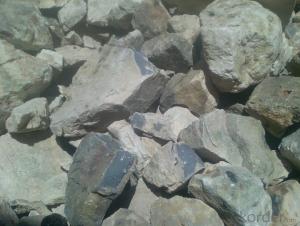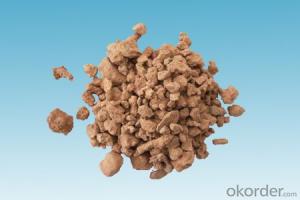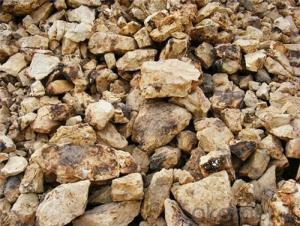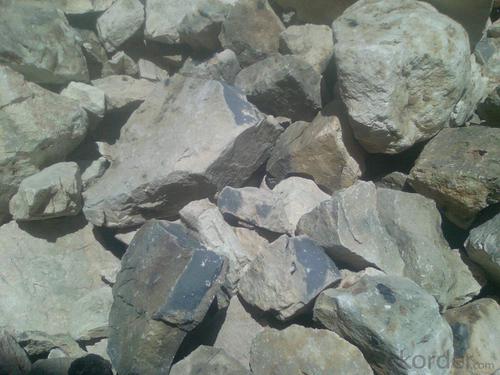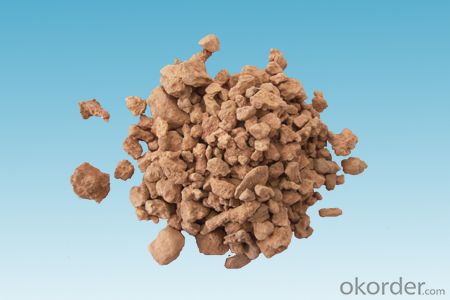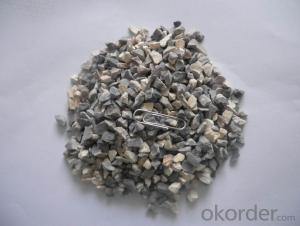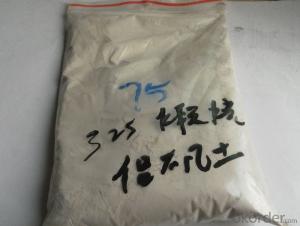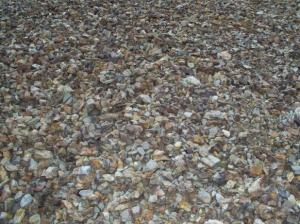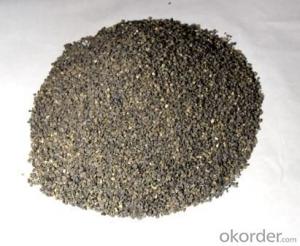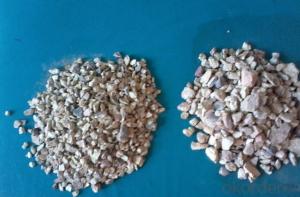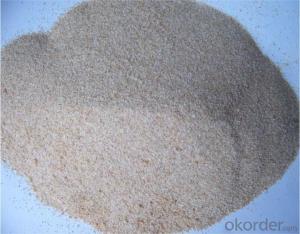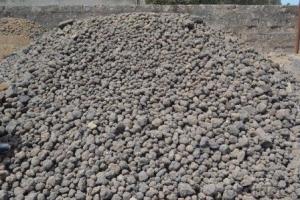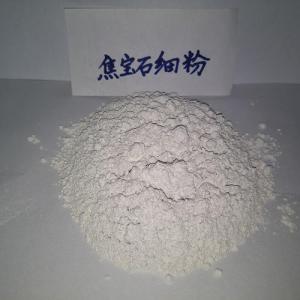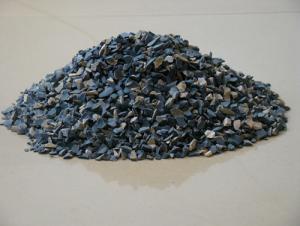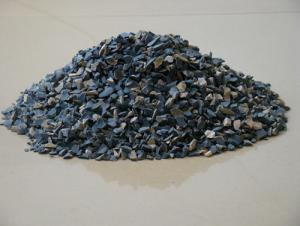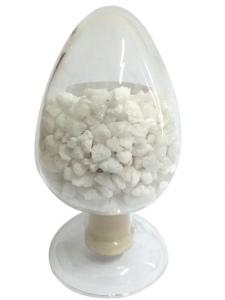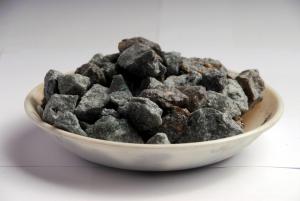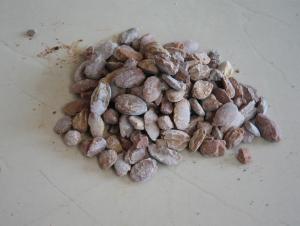Raw Materials for Refractory:Bauxite Material Low Cement for Ladle Lining Refractories for Russia
- Loading Port:
- Tianjin
- Payment Terms:
- TT or LC
- Min Order Qty:
- 11 m.t.
- Supply Capability:
- 10000000 m.t./month
OKorder Service Pledge
OKorder Financial Service
You Might Also Like
1.Structure of Calcined Bauxite Description
Bauxite Material Low Cement for Ladle Linning Refractories for Russia
Bauxite (aluminous soil; Bauxite) is also called the alumina or bauxite, main ingredients are alumina, hydrated alumina containing impurities, is an earthy mineral. White or gray, brown and yellow or light red by iron. From 4 to 3.9 g/cm3 density, hardness, 1 ~ 3 is not transparent, very brittle. Very difficult to melt. Insoluble in water, soluble in sulfuric acid, sodium hydroxide solution. Mainly used for aluminium, refractory material.
2.Main Features of the Calcined Bauxite
Bauxite Material Low Cement for Ladle Linning Refractories for Russia
Calcined bauxite is one of the principal ore of aluminum. Calcined bauxite contains hydrous aluminum oxides and aluminum hydroxides, formed through the laterization of aluminous rocks in tropical and subtropical areas .Calcined bauxite is obtained by calcining (heating)superior grade bauxite at high temperature (from 85OC to 1600C) .This removes moisture there. By increasing the alumina content,compared to an alumina content of about 57%to 58% in raw bauxite, calcined bauxite has an alumina content of 84%to88%.The heating is carried out in rotary kilns.
3.Main usage of the Calcined Bauxite
Bauxite Material Low Cement for Ladle Linning Refractories for Russia
(1) aluminium industry. Used in national defense, aerospace, automotive, electronics, chemical industry, daily necessities, etc.
(2) precision casting. Alumina clinker made after the mould precision casting processed into fine powder. Used in military industry, aerospace, communications, instrumentation, machinery and medical equipment department.
(3) is used for refractory products. High bauxite clinker refractoriness is as high as 1780, chemical stability strong, and good physical properties.
(4) aluminum silicate refractory fiber. With light weight, high temperature resistance, good thermal stability, low thermal conductivity, heat capacity is small and the advantages of resistance to mechanical shock. Used in iron and steel, nonferrous metallurgy, electronics, petroleum, chemical, aerospace, atomic energy, defense and other industries.
(5) in magnesia and bauxite clinker as raw materials, add the appropriate binder, used for pouring ladle whole ladle lining has particularly good effects.
(6) manufacture alumina cement, abrasive materials, ceramic industry and chemical industry can be aluminum of various compound.
4. Calcined Bauxite Images
Bauxite Material Low Cement for Ladle Linning Refractories for Russia
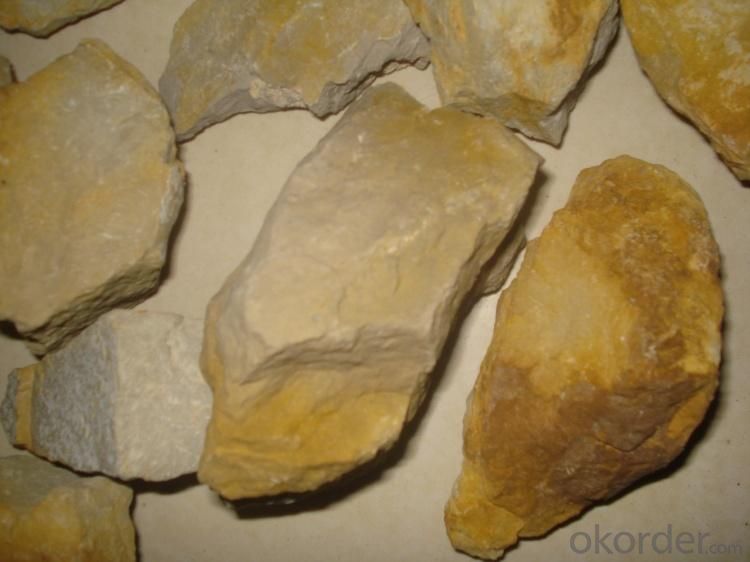
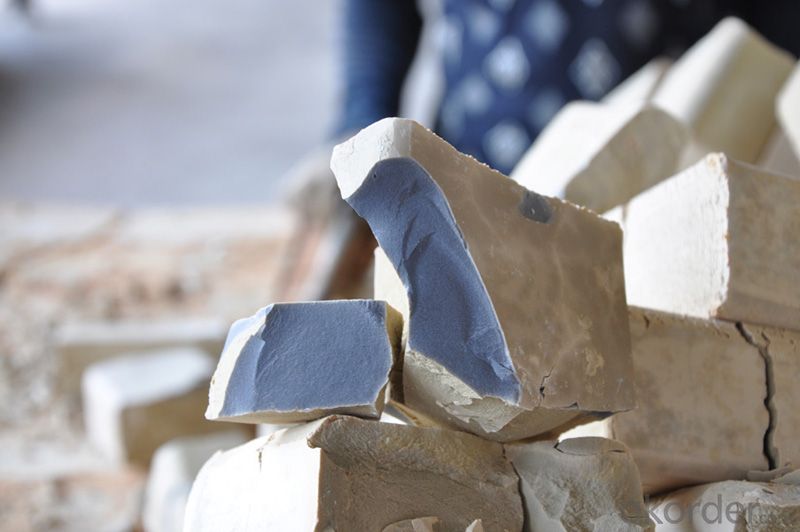
5.FAQ of Calcined Bauxite
Bauxite Material Low Cement for Ladle Linning Refractories for Russia
1). Q: Are you a factory or trading company?
A: We are a factory.
2). Q: Where is your factory located? How can I visit there?
A: Our factory is located in ShanXi, HeNan, China. You are warmly welcomed to visit us!
3). Q: How can I get some samples?
A: Please connect me for samples
4). Q: Can the price be cheaper?
A: Of course, you will be offered a good discount for big amount.
- Q: How is grade of fire endurance divided?
- Fire resistance level is mainly decided according to the importance and function of the building. For example, very important buildings are set as the first level, and the less important is the second level, and so on.
- Q: What are the meanings of azs, 34% and ec in fused brick?
- The fused brick, also called zircon corundum brick, is shorted as AZS for three chemical components in Al2O3-ZrO2-SiO2 ternary diagram. I don't know the meaning of EC.
- Q: How to calculate the thickness of choosing refractory? Such as steel ladle should choose what kind of refractory and using what thicknes?
- The relative production is lower and material cost is higher, the lining of the refractory is thicker: 1, determine the weight of the refractory material according to the main structure of the bearing capacity, to prevent damage to equipment, fire-proof material damage after the surplus size and thickness of the thermal conductivity of refractory materials, the smaller the effective volume, production output, the cost of materials) to consider the selection of refractory material thickness. 3 from the point of usage (usage cycle, relative usage cycle is longer, because under the condition of invariable in the device's overall dimensions of the refractory lining thickness to determine several basic principles, according to the volume of the weight computation of refractories and refractory thickness, these items must be fully consider the pros and cons before decided. 2 according to maximum temperature that shell can withstand.
- Q: What is the difference between wear-resistant material and refractory material?
- Focus is different. Wear-resistant material may or may not be refractory. Such as, aluminum oxide ceramics is both refractory and wear-resistant, and many organic wear-resisting materials are wear-resistant but not fire-resistant. First, refractory material should be refractory. It should be wear-resistant in special cases. High-temperature fluidized bed, trough, etc. need refractory material with high strength and good wear resistance.
- Q: Can anyone say something about the curtain wall fire-proof material key sealing point?
- Keypoints; 1, curtain wall design must consider the safety requirements, one of which is fire protection design. 2, Generally, fire protection planning between curtain walls should use the method of setting fireproof isolation layer. 3, Two layers of fireproof isolation layer whose thickness should not be less than 100mm respectively on the top edge and lower edge of the material parts of the house. 4, the fireproof isolation layer commonly uses 1.5mm thick galvanized steel sheet as supporting plate, using for shelving fireproof sheet. The 100mm thick cavity between the layers is filled with mineral wool non-combustible materials tightly covered with tinfoil on the surfaces. 5, protective isolation layer should try to reconcile curtain wall beam level and finish floor level, so as to fill non-combustible material and to avoid that a piece of glass acrosses two fire?compartments. 6, the beam should be inside 100mm thick fireproof isolation layer to protect the beam and the upper curtain wall plate. 7, when there are open fire function areas like large-scale hotel or restaurant kitchen inside the curtain walls, curtain wall glass in these parts should consider using cesium potassium fireproof glass to improve the fireproof rating in the region. 8, Fireproof setting in the around areas of curtain wall can use the same method of the above fireproof setting between layers. The joint parts of fireproof isolaton layer and main part as well as curtain wall should use fireproof sealant to seal.
- Q: How should fireproof building materials be ranked?
- Division of fire-proof grade of buildings is one of the most basic measures in the fire-fighting technology and measures of buildings. According to our national code of building design, fire-proof grade of buildings are classified into four levels of first, second, third and fourth, of which the first level is the highest in fire resistance and the fourth level is lowest in fire resistance. Fire resistance rating of buildings depends on the combustion performance and fire endurance of the building component. The so-called building component refers to the walls, foundations, beams, pillars, floors, stairs, ceilings, etc.
- Q: What thickness is needed of the ultra-thin fireproof paint with a fireproof time of 2.5 hours?
- Fireproof of steel components can adopt outsourcing concrete (or laying bricks method), fireproof coatings, fire prevention board coated and composite structure. Anti-firing plate can be divided into the fire protection lamella thickness plate and thin plate. Fire protection lamella thickness plate is of 20 ~ 50 mm. There are mainly calcium silicate and decayed stone of fire prevention board fire board, main varieties KB board, CF board; Fire sheet thickness is between 6 to 15 mm and the main varieties have short fiber reinforced cement pressure plate, fiber reinforced ordinary calcium silicate board and glass cloth reinforced inorganic plate. I hope you can be satisfied.
- Q: What are the commonly used admixture for alumina-magnesia refractory? What are the impacts on its performance?
- 2, form Mg-SiO2 coagulation and combination, CA cement bond? Bricks can generally be made by combing with phenolic resin, castable use 1, combined with silicon powder; 3, can also combined with brine MgCl is binding agent
- Q: What kinds of fireproof materials does the safe use?
- The fireproof materials of safe, copper is one of the most widely used material of locks for its good mechanical performance, corrosion resistance and processibility and beautiful colors.
- Q: Is it necessary for the frame of glass fireproof door to be crammed with fire-proof material?
- Close the door , and check if the gap is normal, whether the hole and the door leaf are in the same plane, and whether the door leaf has tendency to fall down. Fire resistance steel door——means that use a cold rolled steel sheet as door frame, door plank and framework, and stuff a door leaf with incombustible material.
Send your message to us
Raw Materials for Refractory:Bauxite Material Low Cement for Ladle Lining Refractories for Russia
- Loading Port:
- Tianjin
- Payment Terms:
- TT or LC
- Min Order Qty:
- 11 m.t.
- Supply Capability:
- 10000000 m.t./month
OKorder Service Pledge
OKorder Financial Service
Similar products
Hot products
Hot Searches
Related keywords
